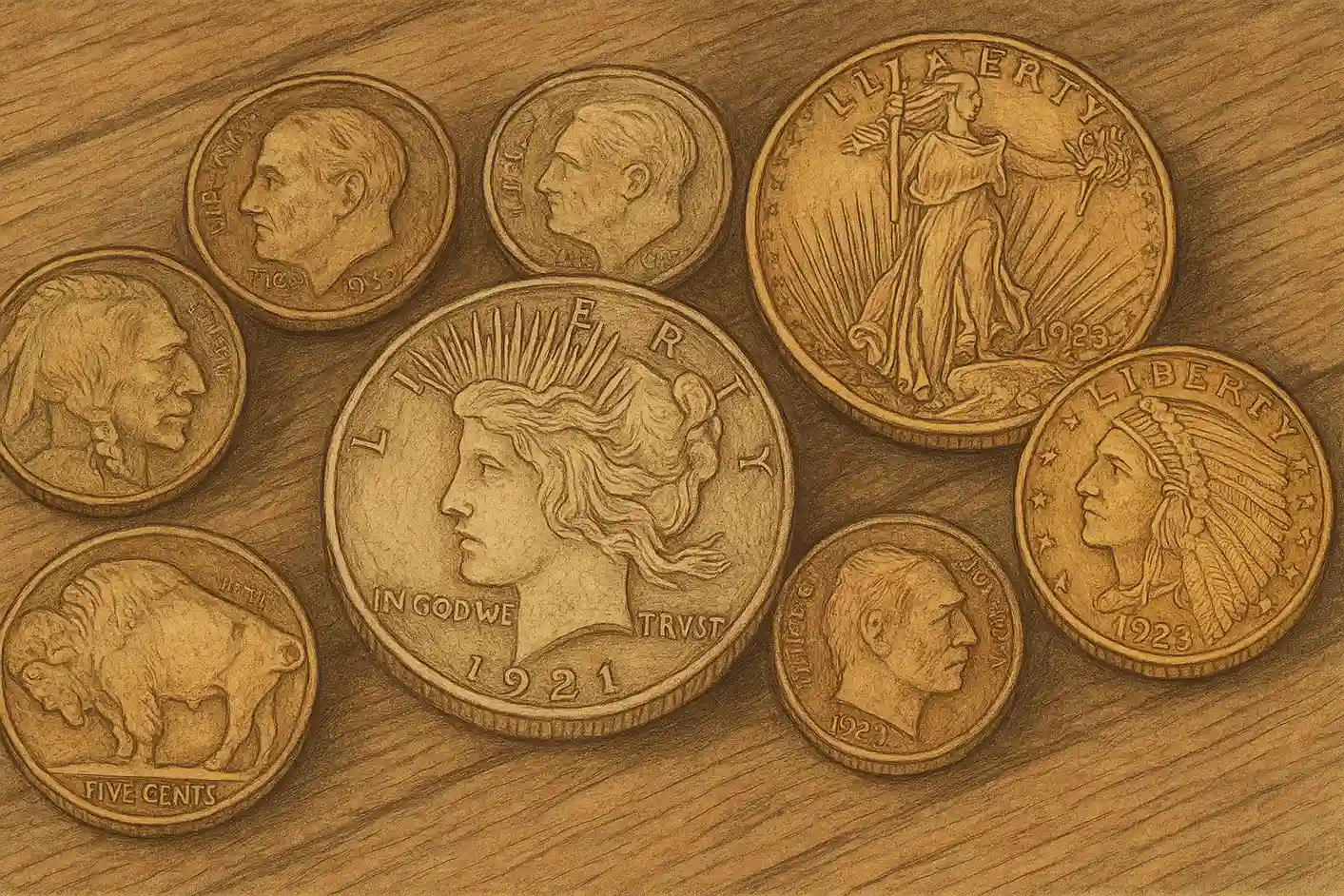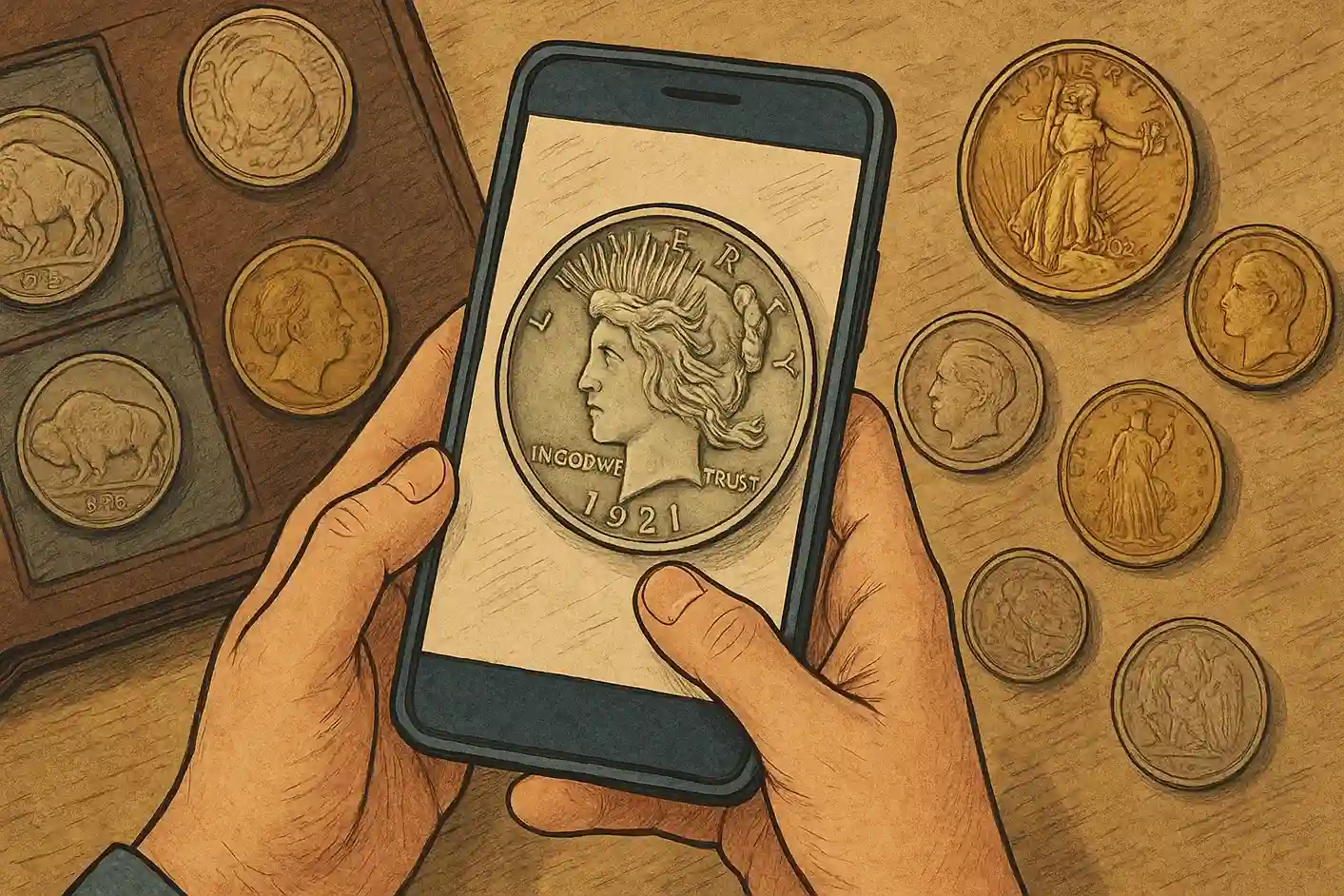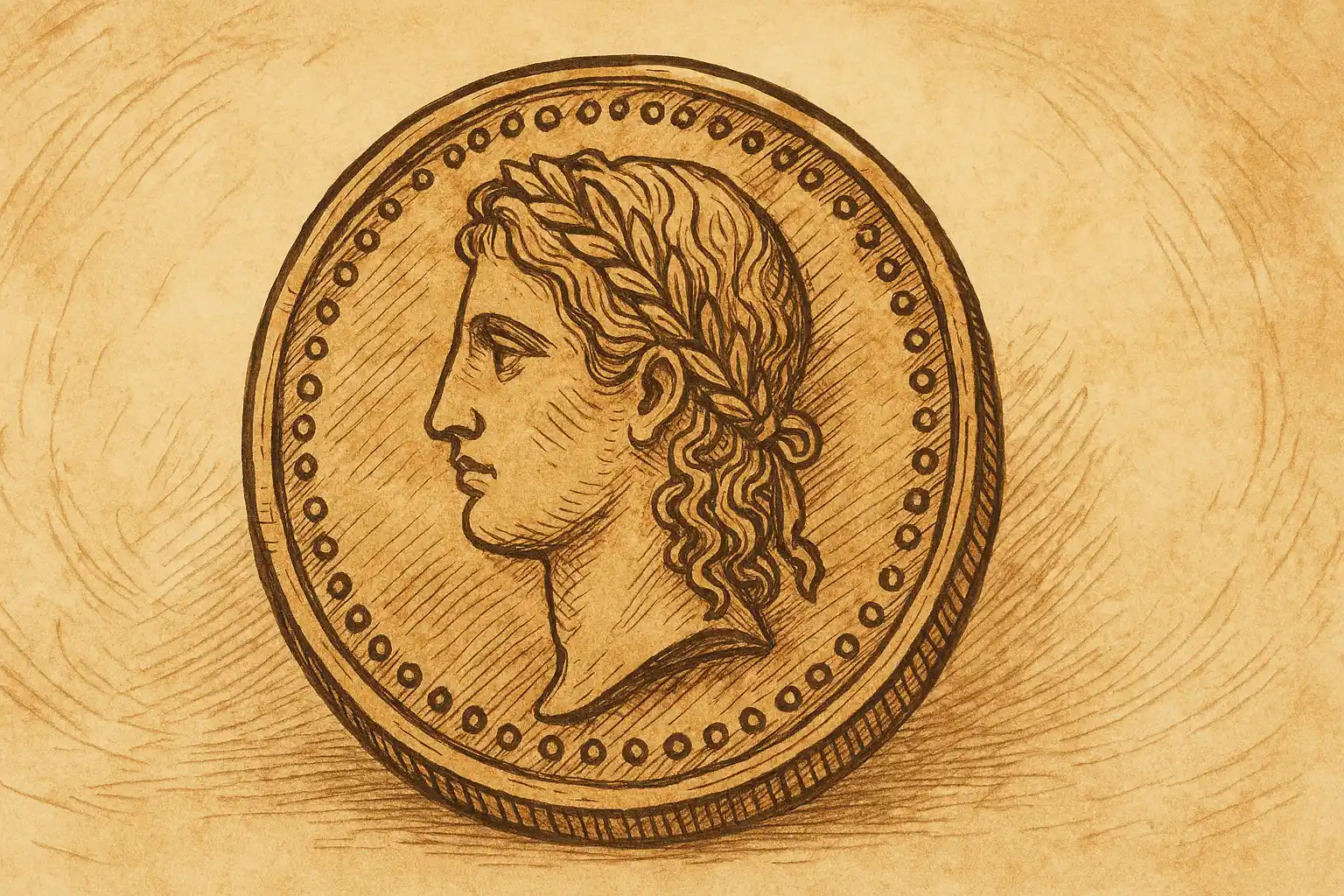Coins are more than metal disks—they are miniature time machines. The early 20th century, a period marked by global transformation, saw immense shifts in politics, technology, and society. These changes didn’t just echo in books or newspapers—they were etched in coins. From the rustic elegance of a 1909 Lincoln Wheat Cent to the majestic symbolism of the 1921 Peace Silver Dollar, coins minted before the 1950s speak volumes about the world that produced them. If you want to learn more about 20th century coinage in general or just curious about that 1936 mercury dime value in your collection — our blog is for you.

Early 20th Century Coinage Historical Context
In the United States, the dawn of the 20th century came on the heels of rapid industrialization. The U.S. Mint, operational since the Coinage Act of 1792, expanded production to support economic growth. Factories were booming, railroads snaked across the nation, and cities were swelling with new populations. The coinage of this time reflects these transitions—modernization, national pride, and global involvement, especially in the aftermath of World War I.
Meanwhile, across the Atlantic, the United Kingdom continued to use the pre-decimal currency system—pennies, shillings, and florins that had remained relatively unchanged for centuries. It wasn’t until 1971 that Britain fully decimalized, but the early 20th-century coins still represented the grandeur of the British Empire at its height. Coins bore the profiles of reigning monarchs, from Edward VII to George VI, creating a timeline of power, policy, and politics right in the palm of one’s hand.
Why Early 20th Century Coins Matter
Coins from this era are not mere monetary units—they’re storytellers. Here’s why they command attention among collectors and historians:
- Historical Significance:
Coins from the 1920s and earlier often had small mintages. Many were lost to time, war, or melting events—especially gold coins recalled during the U.S. government’s 1933 Gold Confiscation Act. Their scarcity today makes them prized possessions. - Design and Craftsmanship:
The artistry of early 20th-century coins is unmistakable. Consider the sculptural beauty of the 1921 Peace Silver Dollar, minted to celebrate the end of World War I, or the rugged charm of the Buffalo Nickel. These aren’t just pieces of currency—they’re miniature sculptures, designed by some of the era’s most talented artists. - Symbolic Importance:
These coins often encapsulated national values. The Winged Liberty Dime, for instance, evoked the themes of freedom and strength. They served as quiet but persistent symbols of identity and resilience during volatile times.
Global Perspectives on Early Coinage
The fascination with early 20th-century coins isn’t limited to American numismatics. Globally, other countries were crafting their own unique coinage that mirrored national pride and colonial reach:
- Germany (Weimar Republic Marks): Post-WWI German coins were minted during extreme inflation, turning currency into a socio-economic commentary.
- British Colonies (India, Australia, South Africa): Coins carried King George V’s profile, symbolizing unity under the crown, even across continents.
- Soviet Union: The early kopeks of the USSR offered stark utilitarian designs, reflecting the ideological shift of a nation in upheaval.
Each coin, regardless of origin, is a window into its country’s mood, priorities, and political climate during a time of significant transformation.
The Bridge Between Art and Economy
Coin design was not merely functional—it was also a national statement. This period saw a move away from purely utilitarian imagery to more symbolic and artistic motifs. Artists like Augustus Saint-Gaudens and James Earle Fraser brought high art to everyday money, creating pieces that are today considered masterpieces of numismatic design.
One iconic example is the St. Gaudens Double Eagle ($20 Gold Coin, 1907–1933). Designed at the behest of President Theodore Roosevelt, it was intended to beautify American coinage and bring U.S. currency up to par with the elegance of ancient Greek coins. The result? A golden token of national pride—so revered, its 1921 version commands auction prices reaching $1.25 million.
Iconic Early 20th Century Coins
Here are some standout coins from the era, along with why they continue to command high prices on the collector’s market:
| Coin | Maximum Estimated Value | Why It’s Valuable |
| 1921 Peace Silver Dollar | $67,500 | First-year issue, high-relief artistry, post-WWI commemorative |
| 1926-S Buffalo Nickel | $135,000 | Poorly struck at mint, high-grade examples are extremely rare |
| 1921 St. Gaudens $20 Double Eagle | $1.25 million | Most were melted in 1933; surviving coins are museum-grade rare |
| 1920-S Indian Head $10 Gold Eagle | $2 million | Meltdown during 1930s gold confiscation made this coin ultra-rare |
Each of these coins represents a fascinating intersection of craftsmanship, economy, and legacy. Let’s look at a few more closely.
Understanding Value: What Makes a Coin Valuable?
Coin collecting, or numismatics, is as much about storytelling as it is about numbers. The value of a coin is determined by a blend of factors that go beyond metal composition or face value:
- Rarity: Fewer coins mean higher demand. Limited mintages or massive melt events (such as the 1933 U.S. gold recall) created built-in scarcity for many early 20th-century coins.
- Condition: Coins graded in Mint State (MS) or Uncirculated condition fetch dramatically higher prices. A well-preserved coin can be worth 10–100 times more than a worn example.
- Historical Relevance: Coins linked to wars, transitions of power, or national milestones carry deeper interest and monetary value.
- Errors and Varieties: Coins with misstrikes, doubled dies, or unusual features can be highly collectible due to their uniqueness.
Collecting and Authenticating Early 20th Century Coins
The process of identifying and authenticating these coins used to require years of study or expensive visits to professional graders. But thanks to modern tools, even beginners can get a solid understanding of what’s in their collection.

One such tool is the Coin ID Scanner app, a smart companion for anyone interested in coins from this or any era. Here’s what it does:
- Image Recognition: Snap a picture of your coin, and the app identifies the denomination, date, and mint.
- Database Access: Compare your coin with thousands of verified entries and current market values.
- Authentication: Spot errors, varieties, or signs of counterfeiting in real time.
- Learning Resources: Access historical insights and tips for preservation or resale.
🛠 “With just a smartphone camera and the Coin ID Scanner app, you can bring expert-level analysis into your own hands—making the process of discovery both easier and more accurate.”
Whether you’re assessing a coin inherited from a relative or browsing antique shops, technology can now offer insights that used to require years of training.
Starting Your Collection: First Steps That Matter
Beginning a coin collection rooted in early 20th-century history doesn’t require a fortune—but it does require curiosity and care. Here’s how to start strong:
- Choose a Focus Area
Early 20th-century coins come in various denominations, materials, and national origins. Consider starting with:- U.S. coins minted from 1900 to 1949
- Coins from a specific country or monarch (e.g., George V British coinage)
- One denomination (like nickels or dimes)
- Commemorative or war-related coins
- Set a Budget
Decide how much you’re willing to invest monthly. Quality always beats quantity—it’s better to buy one high-grade Buffalo Nickel than a dozen damaged ones. - Buy From Reputable Sources
Stick to trusted dealers, numismatic shows, or well-reviewed online platforms. Check for:- Certifications from PCGS or NGC
- Clear photographs and return policies
- Transparent provenance when available
Preserving Your Investment: Storage and Handling Tips
The condition of a coin is crucial to its value. Improper storage or handling can degrade a piece over time, so follow these essentials:
- Use Cotton Gloves
The natural oils on your hands can tarnish or stain a coin’s surface. Use clean, white cotton gloves for handling. - Store in Acid-Free Holders
Use 2×2 holders, coin flips, or capsules that are PVC-free and acid-free. Avoid paper envelopes and plastic bags. - Control Humidity and Temperature
Store your collection in a dry, temperature-controlled space—ideally in a safe or lockable display cabinet. - Avoid Cleaning Coins
Even gentle cleaning can damage a coin’s surface and reduce its value. Patina and toning are part of the coin’s historical integrity.
Using Technology to Your Advantage
In the digital age, even antique collecting gets a modern upgrade. Enter the Coin ID Scanner app—designed for collectors, by collectors. It’s not just a novelty; it’s a serious tool for building a more informed, enjoyable collecting experience.
Key Benefits of Coin ID Scanner:
- Quick Identification: Instantly identify the coin’s denomination, year, and mint mark.
- Price Estimation: See estimated values based on condition and rarity.
- Error Detection: Recognize common and rare minting errors in seconds.
- Educational Insights: Access bite-sized historical facts, preservation tips, and value trends.
🔍 “With Coin ID Scanner, even a beginner can identify a 1926-S Buffalo Nickel in seconds and know whether it’s worth $5 or $50,000.”
Apps like this democratize numismatics—bridging the gap between casual interest and serious collecting.
Coins from the early 1900s are time capsules of a world in flux. They witnessed two world wars, the Great Depression, and shifts in monarchies and democracies alike. Holding a coin from this era isn’t just about owning a collectible—it’s about connecting with the world as it was, preserved in metal and mint marks.With the help of tools like the Coin ID Scanner app, you no longer need to guess at a coin’s origin or rely solely on costly experts. You can explore, verify, and learn at your own pace—anytime, anywhere.



